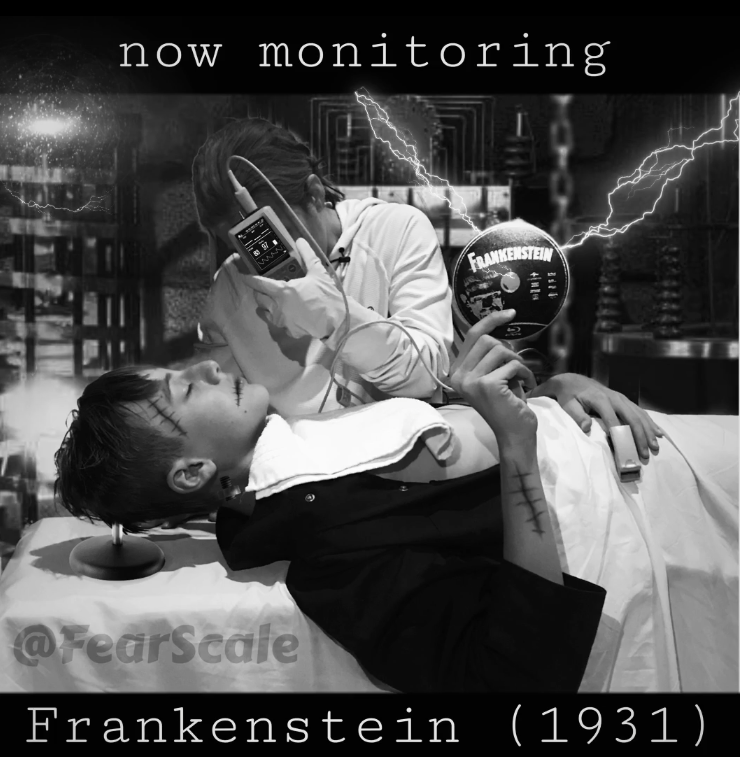Our classic horror competition wouldn’t be complete without one of the most famous monsters in history, Frankenstein (1931). Was this misunderstood monster able to raise our subject’s pulse from the dead? Or did the film leave her flatlined and ready to be exhumed another day?
SYNOPSIS:
An obsessed scientist assembles a living being from parts of exhumed corpses.

Test Subject: Leah
Age : 35
Gender: Female
Fears: Monsters of all kinds
Resting HR: 60-65 bpm
Walking HR: 80-85 bpm

ANALYSIS:
It’s Alive! Our subject’s pulse is alive. Once the story was established and the monster introduced, we were able to record an impressive peak for classic horror of 73bpm. Stress induced scenes including strangulation kept her above resting numbers several times which boosted her average beats per minute. There were also many more attacks in this film than other Universal films we have monitored which added to her level of anxiety.

CONCLUSION:
Empathy wins out in this classic film. Identifying with the misunderstood main characters was what truly raised the heart rate. Of the Universal monsters we’ve monitored, Frankenstein (1931) was able to elicit more of a physiological reaction from our subject by creating life or death tension.
Frankenstein : Burns 76 Calories
Frank’s Stein: An original concoction from our local Orlando, Florida Halloween bar Cocktails and Screams contains 259 Calories.
What did you think of this classic horror? Let us know in the comments and make sure your following @FearScale on Twitter, Instagram, and Facebook


Comments are closed